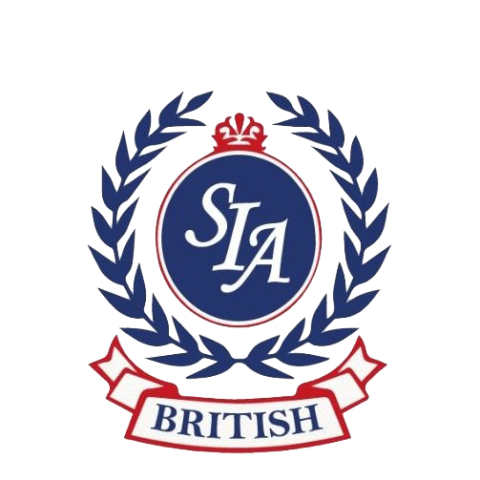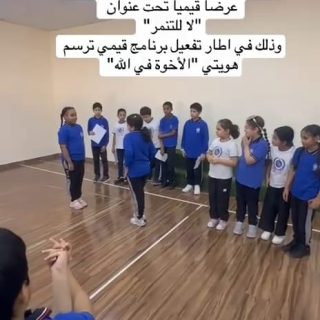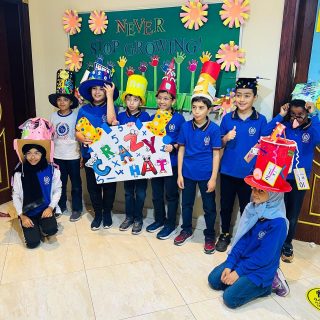Assessment Policy
Assessment, Recording, and Reporting (ARR)
The aim of assessment at Al Shoumoukh International Academy is to provide a positive, continuous and supportive mechanism that promotes and improves student learning and achievement, guides instruction and practice, and evaluates programs as well as instructional effectiveness. Al Shoumoukh International Academy has developed an Assessment, Recording and Reporting (ARR) policy which enables all students to make the best possible progress. As a consequence, this policy will:
- Provide ARR guidance to be followed by school departments in the development of more detailed and relevant ARR procedures for individual subjects.
- provide ARR guidance for individual teachers
- be reviewed and evaluated on a regular, published cycle.سياسة التقييم (2)
By following this policy Al Shoumoukh International Academy will be able to
- inform students, teachers and parents about an individual student’s progress, allowing teachers to reflect on the effectiveness of day to day learning.
- provide data for analysis to teachers and the principal in order to improve understanding of the school’s academic performance and to drive school improvement initiatives.
- Provide data to any educational establishment to which a student has transferred or relocated.
Underlying principles
- Cover the full range and scope of the programs of study, and take into account the evidence of achievement in a range of contexts, including that gained through discussion, observation and written work.
- Provide shared learning objectives that are easily understood by, and regularly accessible to, all students, teachers and parents.
- Improve practices in teaching and learning to provide the appropriate challenge.
- Be a continuous cycle of review, action, evaluation and target-setting.
- Be manageable.
- Motivate.
- Be integrated into day to day teaching.
- Not discriminate in any way.
- Demonstrate cohesion between day to day assessment, recording and reporting.
- Be valid and reliable.
Assessment
Assessment provides opportunities for teachers, students and parents to see how effective individual student’s learning has been in terms of process and product. Assessment provides information about a student’s learning of knowledge, concepts, skills, attitudes and behaviours so that a teacher can improve the provision for the individual educational needs of students by adapting teaching styles and strategies, adapting resources used, the use of differentiation and educational support and planning for the student’s next step in learning.
In simple terms, assessment tells us
- How good the learning was
- How we can proceed.
- Where we go next
Ways of Assessing – Five key questions should guide us in our planning of assessment:
- Why are we assessing ?
- Who are we assessing for ?
- Who will do the assessing ?
- How will we assess ?
- What do we assess ?
What we assess should reflect the focus of teaching and learning. The assessment tasks should be linked to the learning objectives that have been set. A decision has to be made as to which of the assessment opportunities we actually want or need to use. The tasks set should allow students the opportunity to demonstrate what they can do.
Students will be encouraged, supported and expected to take an active role in their learning, making decisions, reflecting on their own progress and networking with other students and teachers.
Student assessment are both formal and informal. Informal or ongoing assessments include daily observations of each child’s abilities in various areas over time. Formal assessments are done using activities to evaluate specific skills linked to the year-end learning goals.
Internal Assessment
Internal assessments will be common across all classes at each grade level to ensure consistency among teachers and to ensure further that each student has an equal opportunity to learn well the things that matter most.
It would usually be expected that some form of objective assessment will take place at the end of each topic/module/unit of work. This would be not less than once a term and more usually twice a term or more. For consistency the grading of these assessments should correlate with the levels, grades and descriptors used in reports to parents.
- Baseline Assessment
- Observation
- Photographing/videoing/audio taping work in progress
- Questioning/discussion
- Examining and evaluating written work
- Teacher devised tests
- Profiling
Marking
Marking should support students in their learning. Written comments should provide clear, positive and helpful feedback, identifying strengths, areas in need of improvement or further teaching and consolidation, based on the objectives set for the task. The comments should motivate students by recognizing, encouraging and rewarding their effort and progress. Marking can also focus teachers’ attention on areas of learning that need to be addressed for individuals or groups of students.
- Comments may be formative, advising and informing work in progress.
- Comments on a completed piece of work may be summative, may set targets and may provide advice for future work.
- Marking may be done initially by the student as a means of self-assessment, using the criteria given.
- Comments may be written to form the basis of a discussion between teacher and student.
- Comments may record a discussion between teacher and student about the work and learning that has taken place.
- Work will be marked regularly and promptly.
- Staff will be aware of the importance of a student’s presentation.
- Marking should allow retention of dignity. Work liberally littered with red ink has a demoralizing effect.
- There will be consistency of annotation within each year group.
- Staff will be aware that students require time to reflect on the marking.
- Student self-evaluation
Recording
When teachers assess they write down selected data about a student’s attainment. Record keeping enables teachers to monitor the progress of individual learners and plan the next step. The most effective recording systems are manageable. From a range of assessments (as outlined above), a student’s attainment is recorded by the teacher.
- measured against a set of agreed and standard criteria (levels or benchmarks) or learning objectives.
- Quantifiable (e.g. 62 scored out of 100).
The school, subject or grade, as appropriate, will agree upon the school’s requirements of selected data. Where applicable, moderation of assessed work will occur at specified intervals to ensure a consistent approach.
We pass on information about our students at the end of each term. We should record this data in a user-friendly way.
- Records on individual students will be passed on to the grading system to the Principal.
- Recording of curriculum levels, if applicable.
- Highlighting of those with below or above average past performance.
- Tracking of these students.
- Annual recording of spelling/reading ages in relation to chronological age.
- Establishing targets for students based on past performance or attainment, through discussion with the student.
- Giving feedback on tests, exams or assessment tasks which relate to targets set.
- Altering targets when they are frequently/rarely met.
- Recording the grades you report.
- Rewarding those who regularly meet their targets.
- Using prior attainment data to assist groupings, if applicable.
- Producing records in order to track performance.
Recording of assessment will be consistent and effective with all teachers maintaining accurate and useful records pertaining to a child’s learning and behaviour. Teachers will:
- Keep detailed records and regularly review students’ base line data, their effort, attainment, strengths and areas for development, as well as their completion of class work and homework, lesson attendance and lesson punctuality. They will make these records readily available to students, parents, senior management and external stakeholders.
- Use their subject knowledge and records and take into account all relevant criteria when making summative assessments about student attainment.
- Use these records and their schemes of work to plan the learning opportunities for students, and in line with the school’s guidelines, prepare reports on students’ progress.
Reporting
Records of the results of assessments are summarized at specific times to provide information about a student’s learning to relevant parties e.g. student, colleague, coordinator, management or parent.
Written reporting provides the school with evidence of the communication that has taken place about a student’s learning. All formal communication or discussion with parents will be recorded to provide evidence of points raised and action decided upon.
In the Foundation Stage, the following aspects are assessed to ensure the holistic development of each child:
- Personal, Social and Emotional Development
- Communication and Language
- Physical Development
- Literacy
- Mathematics
- Understanding the World
- Expressive Arts and Design
The Progress Reports from Foundation Stage to Year 6 include indicators of progress made by each student towards achieving the curricular standards that are developmentally appropriate for each grade level. These indicators are:
- Beginner – Student is beginning to work towards the standard for grade level. Student requires considerable assistance and/or redirecting.
- Developing – Student is working toward the standard for grade level. Student requires moderate assistance and/or redirecting.
- Meets Standard – Student is working at standard for grade level. Student frequently meets expectations with minimal or no assistance.
- Exceeds Standard – Student is working above the standards for grade level. Student consistently and independently exceeds expectations.









